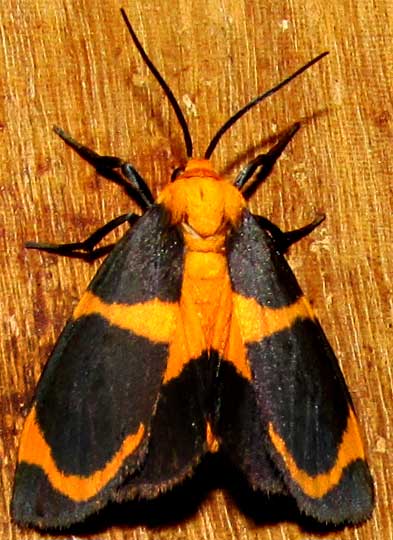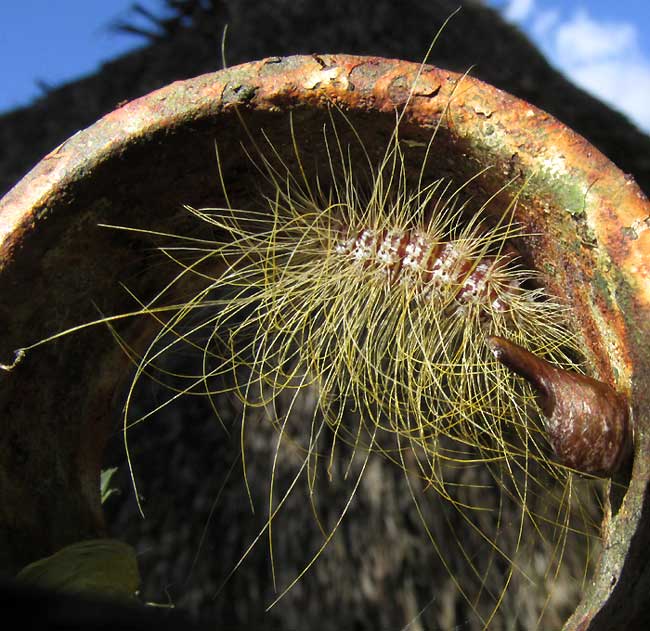Excerpts from Jim Conrad's
Naturalist Newsletter
from the December 20, 2015 Newsletter issued from Hacienda Chichen Resort beside Chichén Itzá Ruins, central Yucatán, MÉXICO
LUNAR EUDESMIA MOTH
Working at the computer during the evening's early hours, moths are attracted through the hut's open doors, to flutter around the super-efficient little spiral-bulbed light on the pole next to me. Most of the moths are so tiny and drab that I doubt even volunteer identifier Bea in Ontario could come up with a name for them, but sometimes something large and eye-catching comes along, such as the one shown below:

Bea soon figured out that it's the Lunar Eudesmia, EUDESMIA MENEA, widely distributed from Texas and Florida in the US, south throughout Mexico and Central America, to Brazil. It's a member of the Lichen Moth tribe, the Lithosiini, of the Tiger and Lichen Moth subfamily, the Arctiinae.
Little information is available about the Lunar Eudesmia's life history, though a paper by F.A. Parada-Berríos and E. Torres-Calderón, in a 2013 issue of El Salvador's online Bioma, reported that the Lunar Eudesmia's caterpillars bear very long hairs, and that they construct a silk structure in which they pupate. The species got the authors' attention because in El Salvador the caterpillars feed on leaves of the Mamey tree, Pouteria sapota, the producer of an important and delicious fruit often sold in tropical markets.
Elsewhere I read that for the vast majority of members of the group of moths to which the Lunar Eudesmia belongs no information is known about feeding habits and behavior. I'm happy that here we can at least document that Lunar Eudesmias are attracted by light in the early evening in the central Yucatan in December. Also, the information about their caterpillars feeding on Mamey leaves appeared in Spanish, so now that is more available to English speakers.
Also, there's this: A couple of weeks ago, sheltered inside a rusty pipe fitting I'd affixed to the top of a pole to keep my clothes line from slipping off... I photographed the extremely hairy caterpillar and very mysterious, teardrop-shaped item shown below:

Bea in Ontario found several species that more or less looked like this, but couldn't come to any decision, and that mystery item drew a blank with her, too. The picture was filed along with many others that over the years have left both of us clueless, and which you never got to see.
However, the above-mentioned Parada-Berríos and Torres-Calderón paper featured a picture of the Lunar Eudesmia's caterpillar and I can see no difference between that and our caterpillar. Knowing that Lunar Eudesmia adults occur where the caterpillar was photographed -- the hut -- it's good circumstantial evidence that they're the same species. If they are, then here's more we can contribute to knowledge of this species:
The caterpillar appeared at the edge of the forest, beneath a large Spanish Plum tree, Spondias purpurea. The day after the picture was taken, around the first of December, the caterpillar was spotted in bright sunlight moving across the ground, which was covered with recently fallen plum leaves. The caterpillar moved with a curious stop-action motion, moving for perhaps half a second, then freezing perfectly still for a second or so, then moving for another half second.